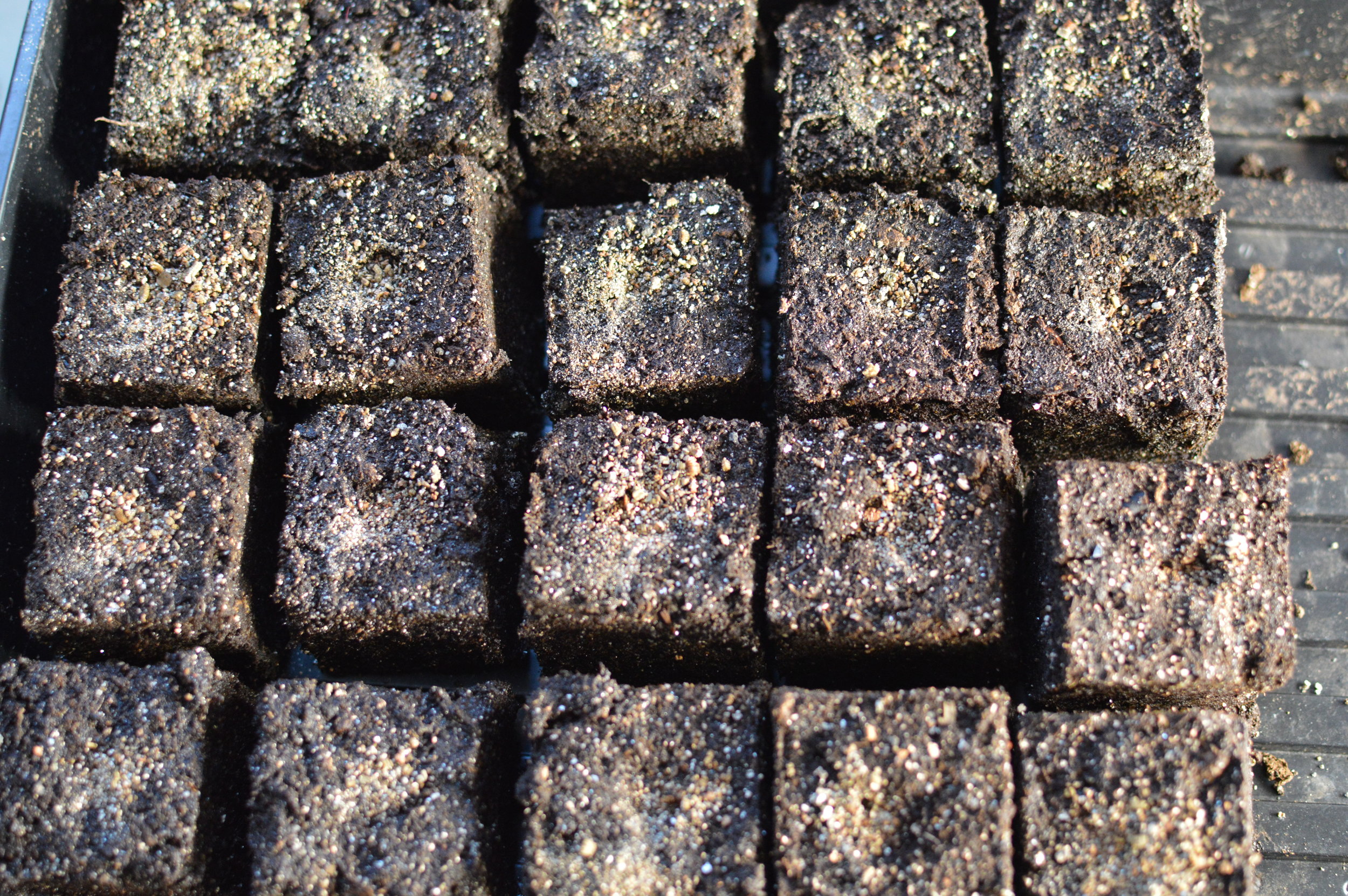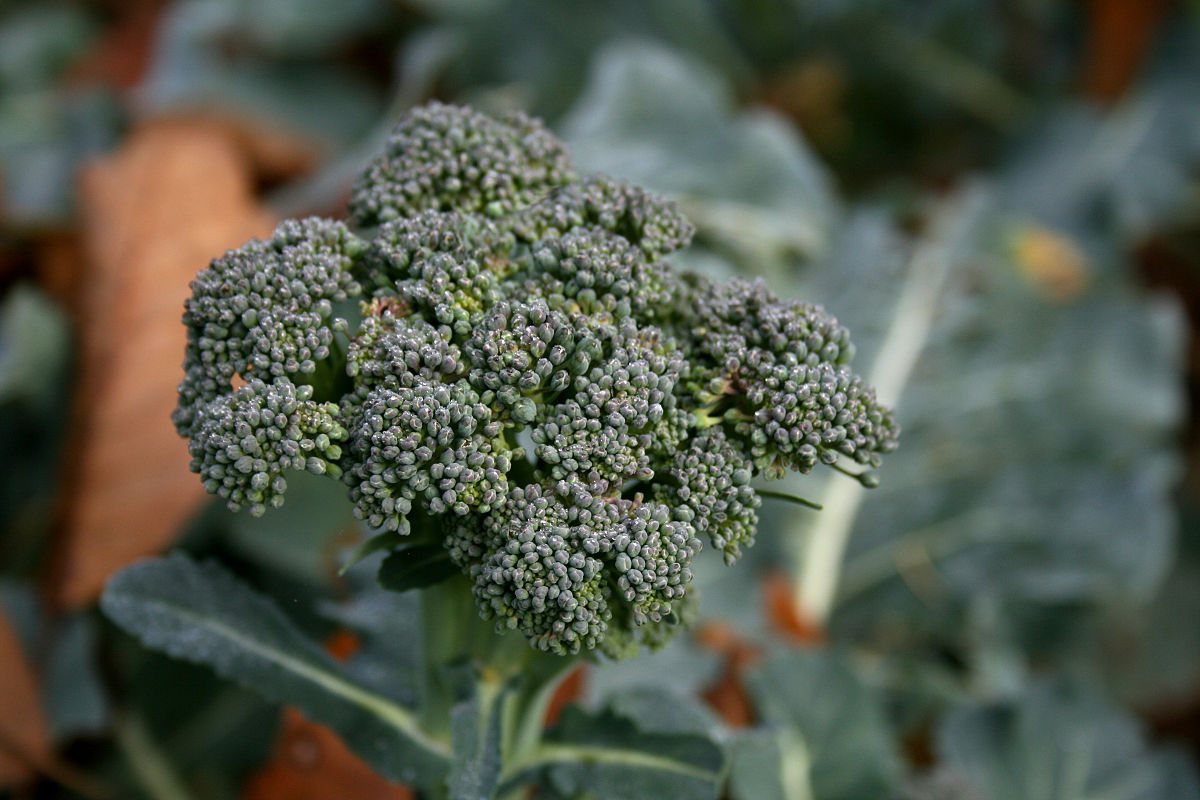This post may contain affiliate links. Full disclosure can be found here.
Tip #1 Plant at the right time of year.
This is a major key in growing broccoli successfully. During head formation broccoli plants need cool days and cool nights. In most of the United States they can be grown either in the fall or in the spring.
Spring planting: Start seed indoors before 8 to 10 weeks before the average last frost. Transplant into the garden 3-4 weeks before the average last frost.
Fall planting: Start seed indoors 15 to 17 weeks before average first frost of fall. Transplant outdoors 10-12 weeks before average first frost of fall.

If you plant too close to the heat of summer, the tight broccoli heads will begin to bolt and flower. Speaking from experience, you can still eat these if you catch it early enough, although they will have a spicy flavor.
If you plant too late in fall, you risk your plants never forming broccoli heads and succumbing to frost.
Personally, I’ve found the most success planting so they mature in the fall. I find there is less risk of bolting and the taste is mild and delicious.
Tip #2 Use varieties that work with the season you plan to grow.
Varieties planted in spring should be fast maturing and slow to bolt.
Broccoli Varieties for Spring
Belstar Compact plants have round domes, small to medium beads and short stems with a thick main stalk. Domes span 6-8″ at maturity and average 1.5 lbs. Ideal for short-stemmed crown cuts or florets. 10-14 day harvest window. (Seed Description by High Mowing Seeds)
De Cicco Italian variety known for tender stalks and mild flavor. Reliable multi-cut variety that produces a compact, 3-4″ bluish-green central head followed by a prolific set of side shoots. Variable maturity results in a long harvest period for both central heads and side shoots. Excellent home garden variety. (Seed Description by High Mowing Seeds)
*De Cicco makes lots of small broccoli heads instead of one large one.
Varieties planted in fall should be slower maturing and be tolerant to cold.

Broccoli Varieties for Fall
Waltham 29 Broccoli Best variety for bunched side shoots. Sturdy 20″ plants support 5-6″ dark blue green heads with medium to large beads and long stalks (hard to find with modern hybrids). Developed to withstand increasing cold for fall maturity. Heat-sensitive. (Seed Description by Baker Creek Seeds)
Marathon Best for over-winter production. This late variety is highly tolerant to cold. Grown successfully in the Northeast for late summer and fall crops, and over the winter in Florida and California. (Seed Description by Johnny’s Seeds)
Tip #3 Feed hungry broccoli plants with nitrogen.
Broccoli is a heavy feeder. By heavy feeder I mean that the plant needs lots of nitrogen to thrive. There are several options to feeding broccoli organically.
 Above photo is Hairy Vetch in my garden. It is a nitrogen fixing cover crop that grows well over winter.
Above photo is Hairy Vetch in my garden. It is a nitrogen fixing cover crop that grows well over winter.
-
Option #1 Grow a nitrogen fixing cover crop or legumes like peas or beans in the bed you want to grow in. Then till the crop into the soil. Wait 2-3 weeks and then plant your broccoli. This option requires some planning in advance.
-
Option #2 Add plenty of compost. Compost does a great job of meeting nitrogen needs. You may need more than one application during the growing season.
-
Option #3 Use blood meal or fish emulsion. If the plants need nitrogen in a hurry (bottom leaves are yellowing) use fish emulsion. I love fish emulsion, it works so fast. Find my favorite brand HERE. For the brand I use, mix one tablespoon fish emulsion with one gallon of water. Water into broccoli plants. Blood meal also works however the results aren’t as quick.
Tip #4 Cover your Broccoli Crop with a row cover or netting.
This serves two purposes. Broccoli is prone to a lot of pests like aphids, cabbage loopers, imported cabbage worms, cabbage maggots, slugs, and cutworms. If you have a row cover on and secure a lot of these pests will not be able to attack your broccoli. A row cover is also great for spring planting because it keeps the area a little warmer and protects against hard frosts.

If your using row covers or netting use hoops made of pvc or metal. They need a support pvc or metal piece running down the middle to protect against collapsing.
This year I am trying netting for my broccoli and cabbage. I haven’t tried it yet but I just bought a bunch of tulle fabric HERE to use a insect netting. It often goes on sale so if you buy some wait for a coupon or clearance! It is a tight enough weave that it will keep cabbage moths out. The tulle is a bargain compared to insect netting sold in garden stores.
The reason I’m trying out netting this year is because I like to plant for a fall harvest. This means my plants go in the ground around the end of July. Row covers can act as insulator and that’s not a good thing in the heat of July and August. The netting will allow for breathability and insect protection. As we get closer to a possible frost and cooler temperatures, I can always put row covers right over the netting.
Tip #5 Allow enough space between the plants.
18-24 inches between plants is the best spacing for the majority of varieties. Broccoli that is given plenty of room will produce larger heads of broccoli. After you harvest the main head of broccoli you will get many smaller side shoots of broccoli. Having enough space also allows for more side shoot production.
Another benefit of allowing enough space between plants is the potential for slug damage is minimized.
 image Source
image Source
Conclusion
Growing large heads of great tasting broccoli can be achieved with my 5 tips for Success!
-
Plant during the right time of year.
-
Use varieties that work for the season you plan to grow in.
-
Feed hungry broccoli plants with nitrogen.
-
Use a row cover or netting to cover broccoli plants.
-
Allow enough space between the plants.
All the tips I recommend are things I have learned from personal experience. Usually I’ve learned it by doing it the wrong way first haha! Save yourself some time and follow these tips for success.


